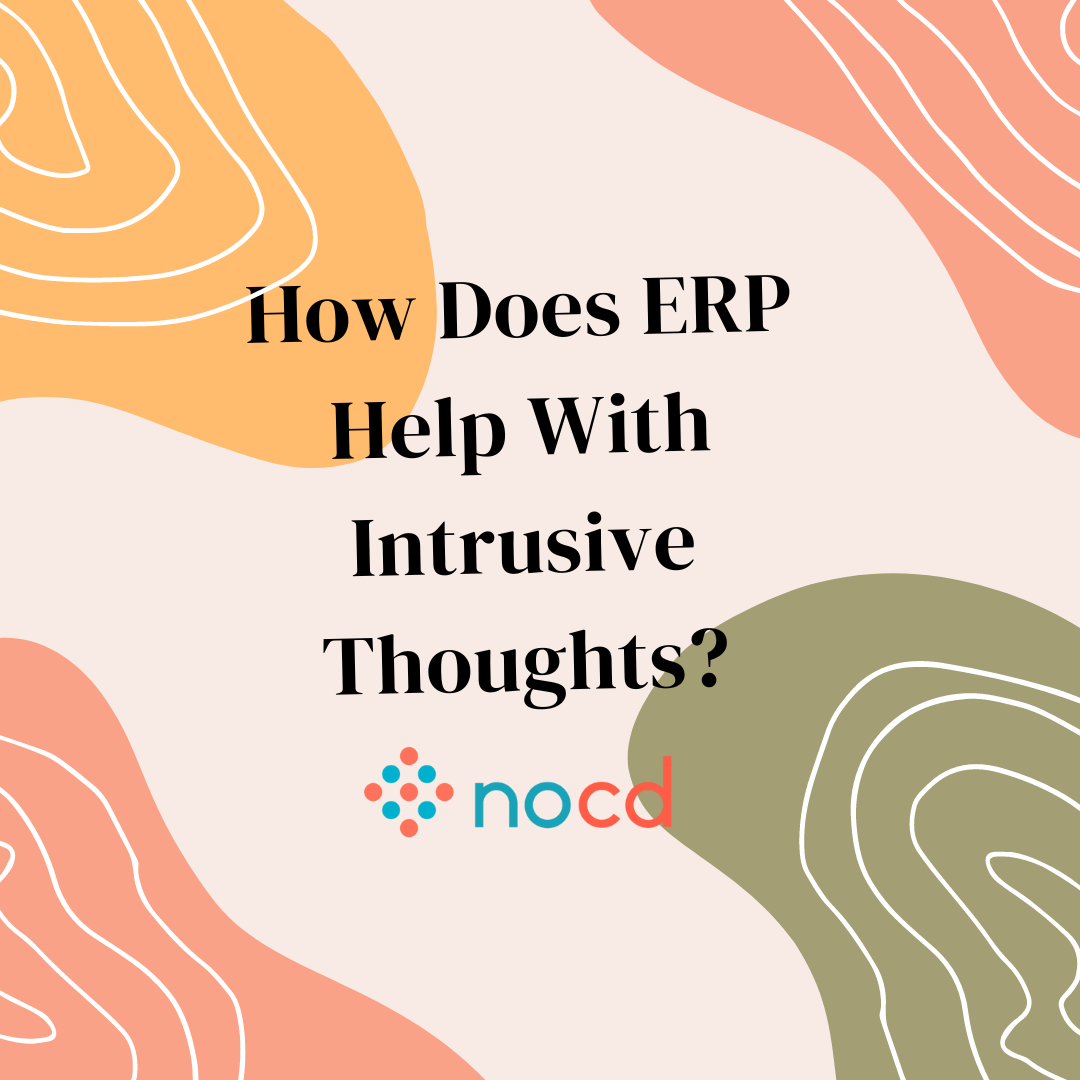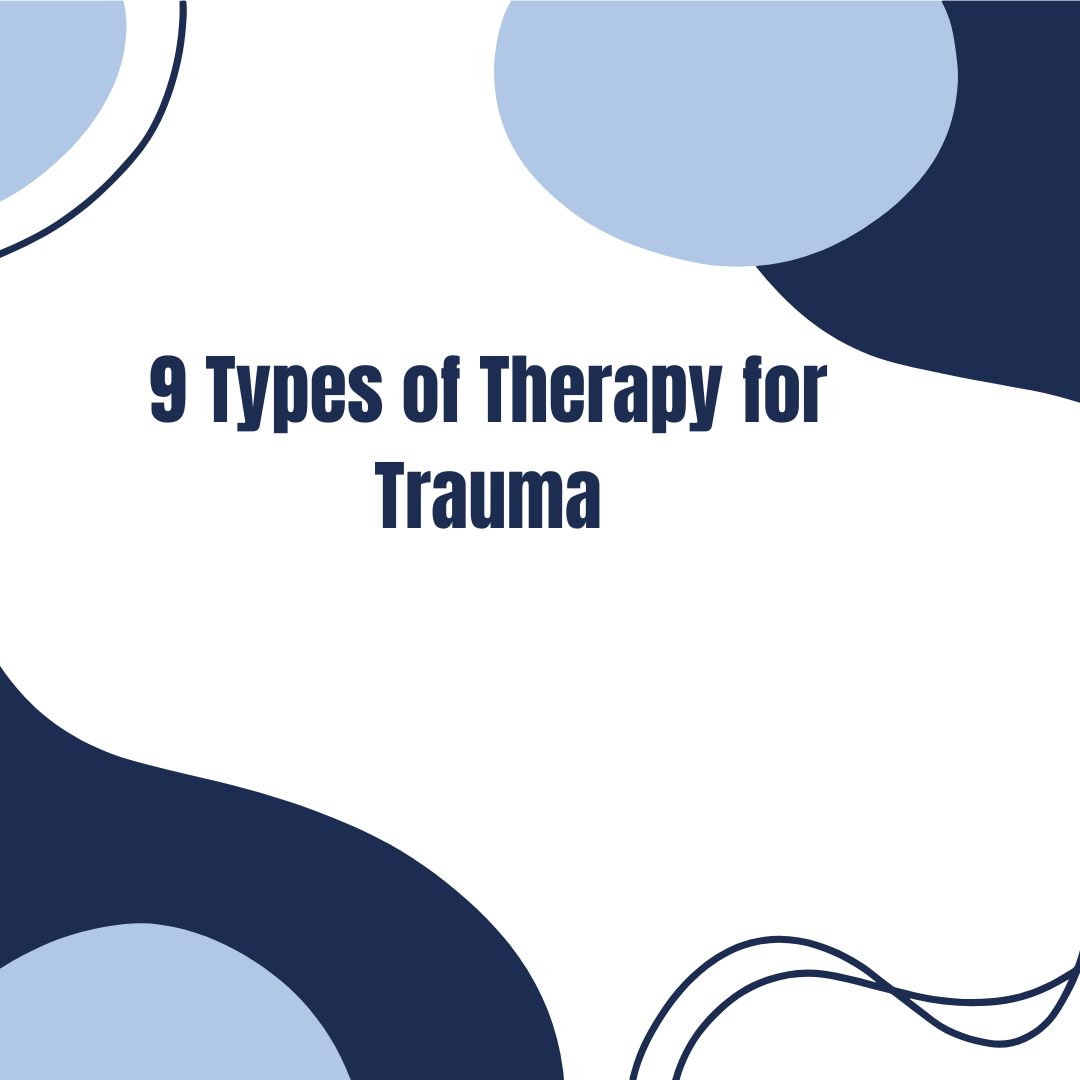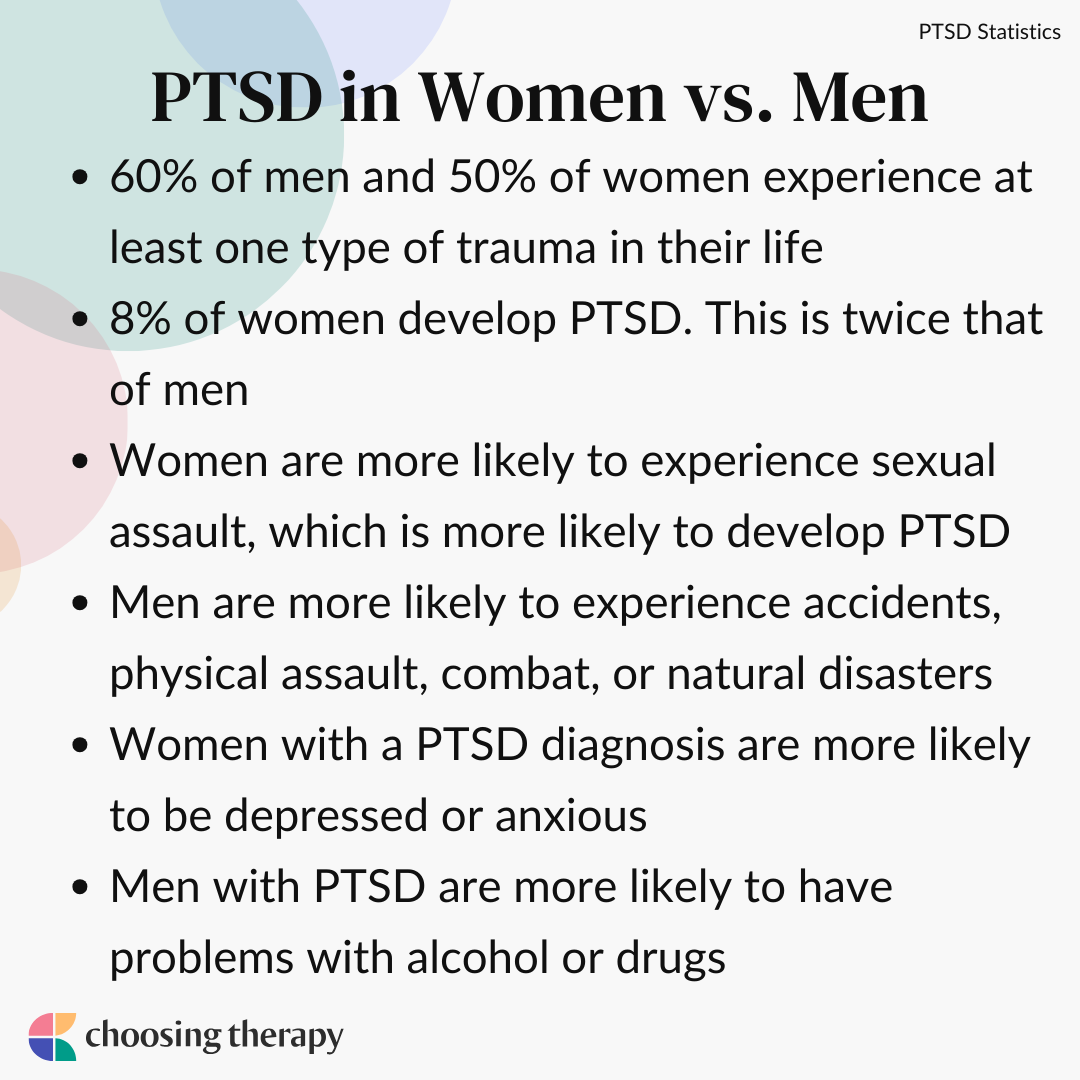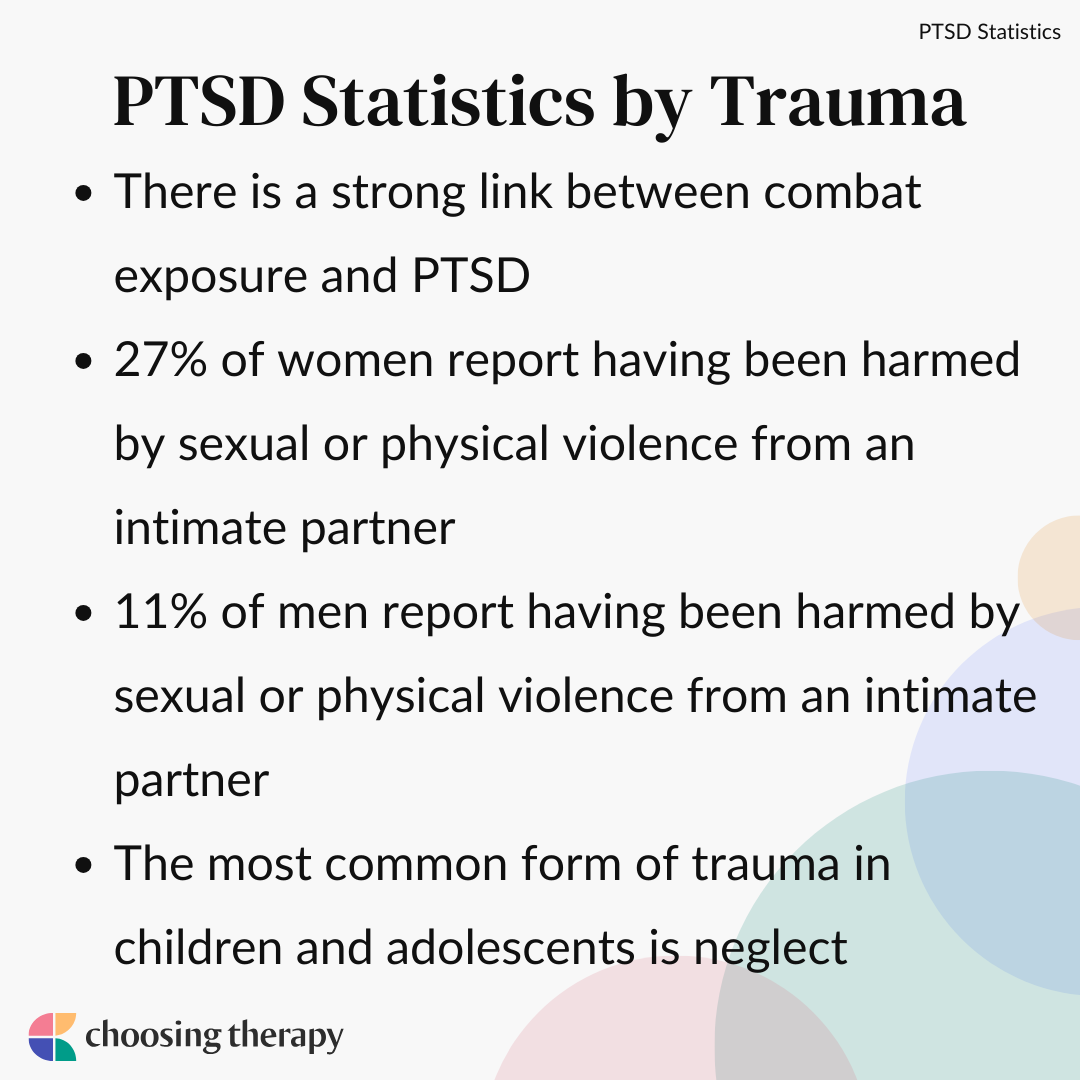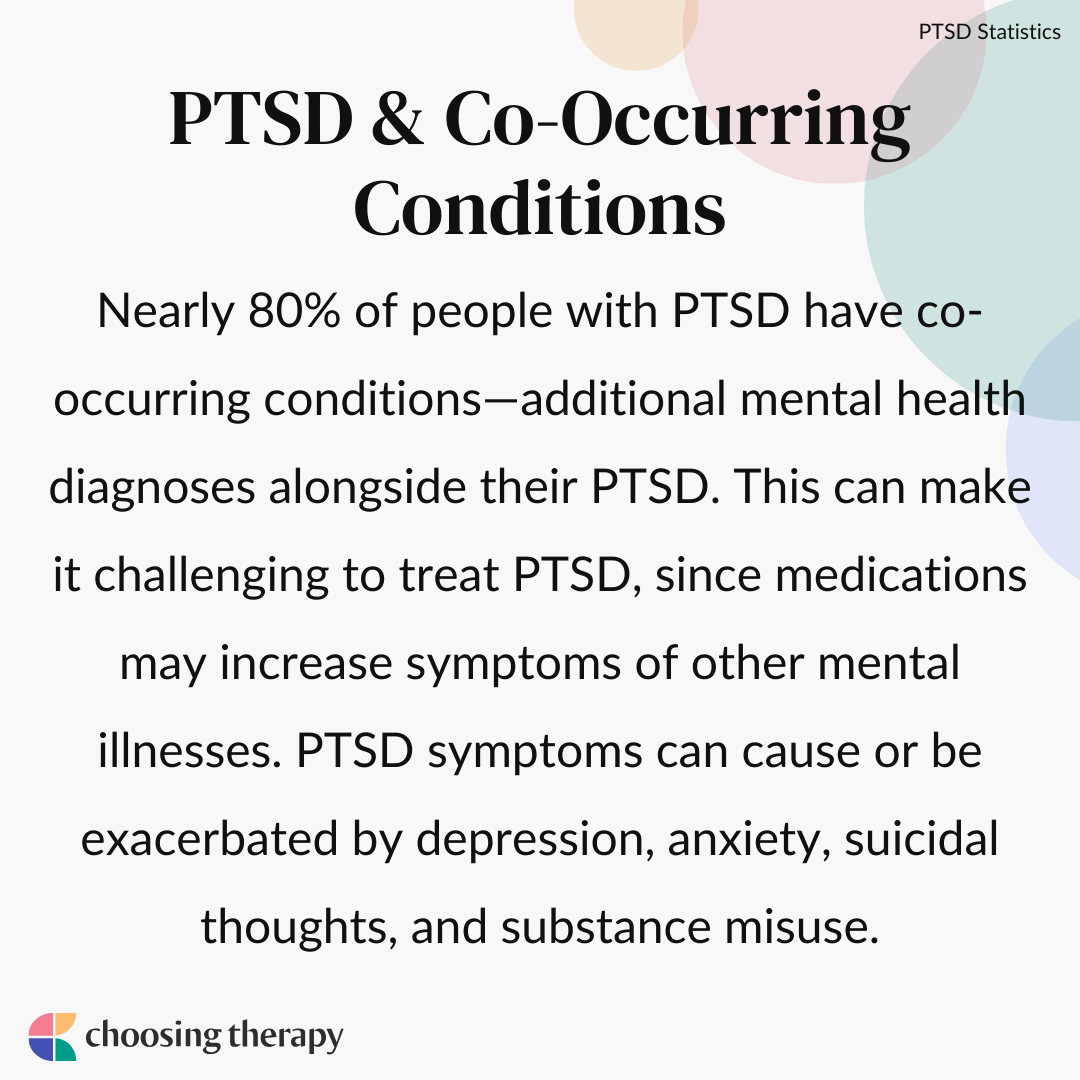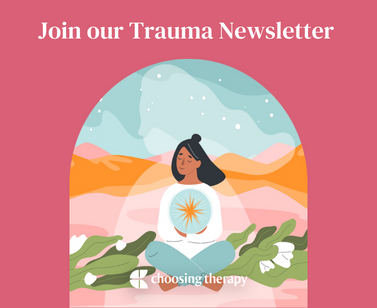Post-traumatic stress disorder (PTSD) can occur after someone has experienced trauma, ranging from violent car accidents, natural disasters, to physical or sexual assault. Those with PTSD may also suffer from depression, a heightened sense of anger, or other mental health concerns. Here are some statistics and resources to better understand PTSD.
Online Therapy For PTSD Therapy can help you live a better life. BetterHelp provides convenient and affordable online therapy, starting at $65 per week. Take a Free Online Assessment and get matched with the right therapist for you!
Prevalence of PTSD in the United States
PTSD can occur in anyone who has experienced trauma at some point. While most trauma symptoms usually occur within three months of the traumatic incident, there are cases of delayed symptoms. It’s also important to mention that not all traumatic incidents lead to PTSD. The circumstances, environment, and access to care all play major roles in how PTSD may occur, if at all.
Still, PTSD is fairly prevalent. Here are some recent statistics from the National Center for PTSD:1
- Approximately 8 out of every 100 people will have PTSD at some point in their lifetime
- Approximately 8 million adults have PTSD during a given year
PTSD in Adults
PTSD in adults can range in severity, from mild, moderate, to serious. Severity is determined by impairment, or how much PTSD impairs a person’s life in work, relationships, and social situations.2
Of adults diagnosed with PTSD in years 2001 to 2003, they fell into the following degrees of impairment:
- 36.6% of adults had serious impairment from PTSD
- 33.1% of adults had moderate impairment from PTSD
- 30.2% of adults had mild impairment from PTSD
PTSD in Adolescents
Adolescents who experience dangerous or traumatic experiences are just as likely to suffer from PTSD as adults. They can experience trauma from war, a friend’s suicide, abuse, or other similar situations.2
According to the National Center for PTSD, adolescents and children who suffer trauma:3
- 15% to 43% of girls and 14% to 43% of boys go through at least one trauma
- Nearly 5% of U.S. adolescents aged 13-18 were diagnosed with PTSD
- Approximately 1.5% of those adolescents had severe impairment
- PTSD is almost twice as likely to affect adolescent females than males
PTSD in Women Vs. Men
While anyone can experience traumatic incidents, men and women statistically tend to experience different traumas. Women are more likely to blame themselves for their trauma and are prone to avoiding things that remind them of it. Men with PTSD are more likely to be angry and have trouble controlling their emotions.
Other statistics from the National Center for PTSD include:1,4
- 60% of men and 50% of women experience one type of trauma in their life
- 8% of women develop PTSD. This is twice that of men (4%)
- Women are more likely to experience sexual assault, which is more likely to develop PTSD
- Men are more likely to experience accidents, physical assault, combat, or natural disasters
- Women with a PTSD diagnosis are more likely to be depressed or anxious
- Men with PTSD are more likely to have problems with alcohol or drugs
Help For Trauma / PTSD Talk Therapy – Get help recovering from trauma from a licensed therapist. Betterhelp offers online therapy starting at $60 per week. Free Assessment Online PTSD treatment – Talkiatry offers personalized care from psychiatrists who listen and take insurance. Get matched with a specialist in just 15 minutes. Take our assessment
PTSD Statistics by Trauma
Not every traumatic event will lead to a PTSD diagnosis, but there are several types of trauma that are more likely to result in one. Some examples include witnessing death, injury, war, or natural disasters.5
In a sample study of 225 samples of survivors of 132 distinct disaster or mass violence events:
- Less than 10% of survivors sustain severe, prolonged problems related to the traumatic incident
- Of the survivors who suffered from PTSD, 50% had moderate effects
- 24% of those survivors had severe effects
- 17% of those survivors had very severe effects
In other types of trauma:3,6,7
- There is a strong link between combat exposure and PTSD
- 27% of women report having been harmed by sexual or physical violence from an intimate partner
- 11% of men report having been harmed by sexual or physical violence from an intimate partner
- The most common form of trauma for children or adolescents is neglect
PTSD in Veterans
In the past, PTSD was more commonly known as “shellshock.” It usually went untreated, but has now become one of the leading subjects of study in PTSD research. Military personnel are subject to combat stressors like witnessing death or injury, or handling human remains, all of which can result in PTSD. They also must be alert at all times and are at risk of death or injury. They may also be away from home for long periods of time, contributing to work or life stress once they return to civilian life. These stressors increase the chance of veterans developing PTSD later in life.6 PTSD also differs by service time or operation. Military personal are also subject to sexual assault or harassment.
There are many statistics regarding veterans and PTSD from the National Center for PTSD:8,9
- Soldiers and Marines who served in Iraq had higher rates of PTSD than those who served in Afghanistan
- Operation Enduring Freedom/Operation Iraqi Freedom (OEF/OIF) troops are 10% to 18% more likely to have PTSD when they return
- About 12% of Gulf War veterans have PTSD
- At the time of studies done in the 1980s, about 15% of Vietnam veterans were diagnosed with PTSD
- It is now estimated that roughly 30% of all Vietnam veterans have had PTSD
- 3% to 25% of OEF/OIF veterans are estimated to have depression when returning from duty
- A 1995 study found that 78% of female service members and 38% of male service members suffered from sexual assault while on active duty
- Research with Persian Gulf War military personnel found that rates of sexual assault, physical sexual harassment, and verbal sexual harassment were higher in active combat than in peacetime
- Victims of military sexual trauma are less likely to report harassment to authorities
- For veterans in VA care, about 23% of women reported sexual assault while in the military
- For veterans in VA care, 55% of women and 38% have experienced sexual harassment while in the military
Online Therapy For PTSD Therapy can help you live a better life. BetterHelp provides convenient and affordable online therapy, starting at $65 per week. Take a Free Online Assessment and get matched with the right therapist for you!
PTSD & Co-Occurring Conditions
Nearly 80% of people with PTSD have co-occurring conditions—additional mental health diagnoses alongside their PTSD.10 This can make it challenging to treat PTSD, since medications may increase symptoms of other mental illnesses.2 PTSD symptoms can cause or be exacerbated by depression, anxiety, suicidal thoughts, and substance abuse.
PTSD & Depression
Many PTSD and depression symptoms overlap. There are also possible connections between the types of trauma experienced and the likelihood of a person developing PTSD.
What to know about PTSD and depression:
- Trauma at an early age can make the brain develop abnormal responses to fear and stress, which can later lead to depression11
- Roughly 50% of those with PTSD also suffer from Major Depression Disorder (MDD)12
- Those with PTSD and MDD are at greater risk for suicide
PTSD & Suicide
There are different bodies of research on whether those with PTSD are more likely to commit suicide because of the trauma they experienced or because of the other mental illness side effects tied to their PTSD.
There are, however, some important distinctions, including:13
- Veterans with combat trauma who were injured multiple times or hospitalized for an injury are more likely to commit suicide
- PTSD was significantly associated with suicidal ideation or attempts
- Childhood abuse may lead to a person’s higher risk of suicide
- Those with military sexual trauma have a higher risk of suicide
- There may be some correlation between PTSD symptoms like intrusive thoughts and a higher risk of suicide
PTSD & Anxiety
Many PTSD symptoms also cause anxiety. Feeling jittery, anxious in certain situations, or unable to sleep are a few examples. This is sometimes called hyperarousal, where a person is constantly aware of their surroundings or is easily startled. They may avoid crowds or situations similar to the trauma they experienced.
How PTSD and Anxiety mix:14,15
- About half of those with acute stress disorder, where those who went through a trauma relieve it painfully for a few days after, go on to develop PTSD
- Panic attacks often occur with PTSD and depression
- Anxiety about sleeping due to feeling too alert or not being able to relax in silence can lead to further sleep problems, which increase the likelihood of suicide
PTSD & Substance Abuse
Whether dealing with sleep problems or handling difficult situations, it is not uncommon for those with PTSD to attempt to self-medicate with substance abuse. Those with PTSD may use alcohol or drugs to lessen their symptoms or avoid them entirely, but this can lead to their symptoms getting even worse. Alcohol abuse, in particular, can lead to a harsh cycle of trauma and abuse.
Studies by the National Center for PTSD show:16,17
- Substance abuse can either start from trauma or from PTSD. If you have one, you’re likely to have the other
- Those with ongoing pain or health problems report drinking abuse after going through a traumatic event
- Nearly 2 out of 10 veterans with PTSD also have substance abuse disorder
- 6 out of 10 veterans with PTSD also smoke
- About 1 in 10 returning Iraq and Afghanistan veterans have an alcohol or substance abuse problem
- 74% of Vietnam veterans that had PTSD also had a substance abuse disorder
Statistics on PTSD Treatment & Outlook
While PTSD symptoms may never fully go away, there are treatment options to help mitigate symptoms and provide tools to manage anxiety and other problems related to PTSD. Not everyone who experiences trauma develops PTSD, and not everyone with PTSD requires treatment. PTSD affects everyone differently.
Those with PTSD may avoid seeking care for a variety of reasons, including social stigma or difficulties finding a therapist.18 While medications are available, psychotherapy focused on trauma is the most effective form of PTSD treatment.19
Additional Resources
To help our readers take the next step in their mental health journey, Choosing Therapy has partnered with leaders in mental health and wellness. Choosing Therapy is compensated for marketing by the companies included below.
Online Therapy
BetterHelp – Get support and guidance from a licensed therapist. BetterHelp has over 25,000 therapists who provide convenient and affordable online therapy. Take A Free Online Assessment and get matched with the right therapist for you. Free Assessment
Online PTSD treatment
Talkiatry offers personalized care from psychiatrists who listen and take insurance. Get matched with a specialist in just 15 minutes. Take our assessment.
Treatment For Trauma & OCD
Half of people diagnosed with OCD have experienced a traumatic life event. The chronic exposure to stressful situations, such as ongoing bullying, or an abusive relationship can lead to the development of OCD symptoms. NOCD therapists specialize in treating both trauma and OCD and are in-network with many insurance plans. Visit NOCD
Trauma & Abuse Newsletter
A free newsletter for those impacted by trauma or abuse. Get encouragement, helpful tips, and the latest information. Sign Up
Choosing Therapy Directory
You can search for therapists by specialty, experience, insurance, or price, and location. Find a therapist today.
For Further Reading
How Does ERP Help With Intrusive Thoughts? Obsessive compulsive disorder (OCD) is a psychiatric condition marked by the presence of obsessive thoughts, images, doubts, or urges, followed by compulsive behaviors or acts aimed at easing the distress caused by the obsession. While the content of the obsessions can take many forms, they are always repetitive, persistent, involuntary, and intrusive, and they often result in a great deal of anxiety for the person experiencing them. 9 Types of Therapy for Trauma Experiencing trauma can result in distressing and debilitating symptoms, but remind yourself that there is hope for healing. If you or a loved one is suffering from the aftereffects of trauma, consider seeking therapy. Trauma therapy can help you reclaim your life and a positive sense of self. 